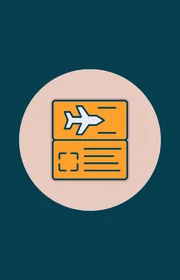Points and miles get all the attention in the world of travel rewards. But what if that “free” flight or hotel stay is actually costing you more than you realize?
That cost? Opportunity cost.
This isn’t a pitch to ditch points and miles entirely, but rather, a reality check on when cash back might actually be the smarter move.
The Real Cost of Points and Miles
Time and Effort
Let’s be real… we’re all a little points-and-miles-crazy around here. If we weren’t, we wouldn’t be very good at our jobs.
But, maximizing travel rewards requires more than just swiping a credit card. You need to learn about transfer partners, stay up to date on program changes, and spend some serious time searching for award space. Redemptions can fall through, taxes add up, and blackout dates derail your plans.
Annual Fees
Premium travel credit cards often come with high annual fees, sometimes upwards of $550 or $695. Even if perks help offset the cost, that’s still money out of pocket each year. You need to make sure that you’re making your annual fee worthwhile by using the card’s perks, such as statement credits, etc. Otherwise, it could hurt you financially.
Opportunity Cost
Every dollar spent on a travel rewards card could have earned cash back instead. That’s the core of “opportunity cost.”
If you’re putting $6,000 on a card to earn a welcome offer, that same spend could net $120 in cash with a 2% cash-back card. Add in an annual fee, and the net value of that bonus starts to shrink pretty quickly.
This means that while earning 100,000 points might feel free, there’s often an unseen cash value that’s being given up in the process.
And please know, I’m not trying to sway you from miles and points entirely. 🙂 Because again, miles and points are how we visit all corners of the world. But treat this as a sort of “reality check” to ensure you make it worthwhile.
Earning a Credit Card Welcome Offer vs. Cash Back
Let’s say a credit card offers 100,000 points after spending $6,000 in three months. If you value those points at 1 cent each, that’s $1,000 in rewards.
But here’s the flip side:
A 2% cash-back card would earn $120 on the same spend.
If the card with points charges a $95 annual fee, you’re giving up that $120 + $95, which would equal $215 in total value.
Even high-value redemptions often require a little more attention.
Bottom Line: The real cost of that 100,000-point offer is $120 in lost cash back, plus any out-of-pocket fees.
When Cash Back Beats Points
Booking a business class seat with points can feel like a win, until you pay the taxes and fees. A flight on Virgin Atlantic from New York (JFK) to London (LHR) might require:
47,500 Virgin miles
$1,000+ in out-of-pocket costs
If those points were earned at a 3x rate, that’s $15,900 in spending. On a 2% cash back card, that same spend equals $318 in cash. You could put that toward a business class sale fare instead, which you can often find for less than $1,000.
Co-Branded Hotel Cards vs. Cash Back Flexibility
Cards like the IHG One Rewards Premier Credit Card earn 10x points on IHG purchases. This sounds great, until you realize those points are only worth about 0.5 cents each. That’s a 5% return. While that’s still a fantastic card, you’ll need to make sure you’re using all of its perks.
A 2% cash-back card lets you earn real cash that can:
Be used to buy discounted points
Cover room charges or taxes
Fund hotel stays during sales
The flexibility often wins out here!
Turning Cash Back Into Travel Rewards
Convert to Points
Some programs allow you to turn cash back into points, giving you the best of both worlds (Hannah Montana pun absolutely intended).
Chase: Freedom cards earn cash back, but when paired with the Chase Sapphire Preferred® Card or Chase Sapphire Reserve®, those rewards become transferable Ultimate Rewards points.
Capital One: Select cards allow you to convert cash rewards into Capital One Miles.
This setup gives you higher earning potential on everyday purchases, plus flexibility to choose cash or travel.
Stack Cash Back With Other Strategies
Use cash-back cards for non-bonus categories or purchases that don’t earn travel rewards. Then, transfer the cash into your travel ecosystem (if possible) or use it to cover surcharges and award fees.
Some of our favorite cash-back cards include:
Points or Cash Back?
When to Prioritize Points:
You’re booking high-value award flights with minimal fees
You know how to transfer and maximize rewards
You’re working toward elite status or companion perks
When to Go With Cash Back:
You prefer simplicity and flexibility
You travel less frequently or book sale fares
You want to avoid high annual fees and reward limitations
Bottom Line
Points and miles can give you some incredible value — but they’re not free. Understanding the opportunity cost of earning and redeeming points helps you make better decisions for your wallet.
If you’ve always chased points, it might be time to step back and rethink your strategy. A balanced rewards setup (one that includes cash back) might give you more flexibility, better value, and less stress in the long run.












